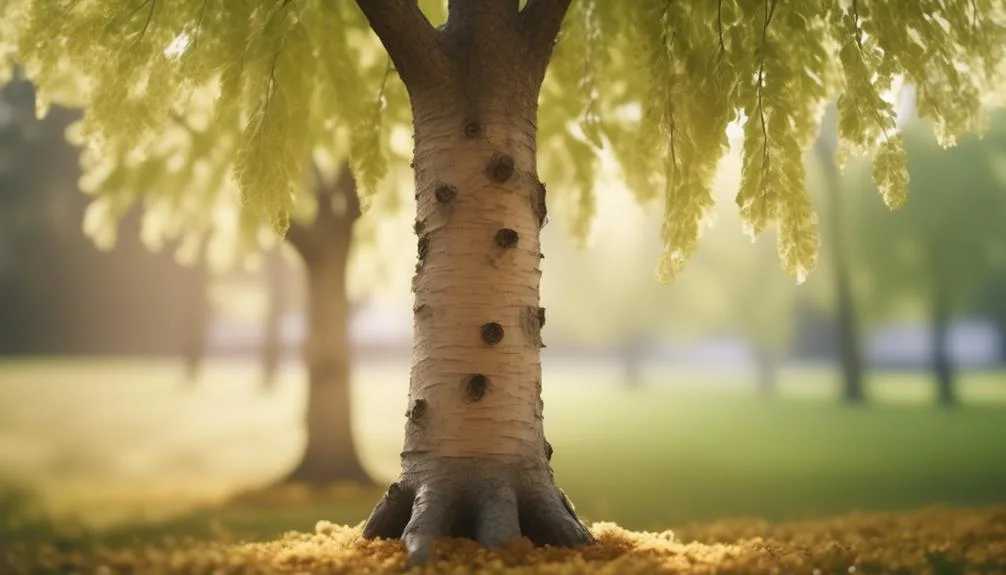Do elm trees support grafting? Horticulture offers numerous possibilities, and elm trees are no exception. Grafting elm trees can create new varieties and improve existing ones.
Is it feasible? Let's dive into the world of elm tree grafting to find out.
Compatibility of Elm Tree Grafting
To ensure successful grafting of elm trees, it's crucial to consider the compatibility between the rootstock and the scion. Different methods, such as whip and tongue grafting or bark grafting, can influence the compatibility between the rootstock and scion, ultimately impacting the overall success of the graft.
When selecting the rootstock and scion, it's important to consider disease resistance and growth patterns. Disease-resistant rootstocks can help improve the overall health and longevity of the grafted tree, while understanding the growth patterns of both the rootstock and scion can aid in achieving a harmonious graft.
Suitable Elm Tree Grafting Techniques
When grafting elm trees, selecting suitable techniques is essential for ensuring compatibility between the rootstock and scion, ultimately impacting the success of the graft. Here are some key techniques to consider:
- Rootstock selection: Choose a healthy and vigorous rootstock that's compatible with the scion variety. The rootstock should also be disease-resistant and well-suited to the local climate.
- Grafting tools: Ensure that you have high-quality, sharp grafting tools such as a grafting knife, grafting tape, and grafting sealant. Using the right tools can significantly improve the precision and success of the graft.
- Grafting method: Select the most suitable grafting method for elm trees, such as whip and tongue grafting or side grafting, based on the characteristics of the rootstock and scion.
- Aftercare: Provide proper aftercare, including regular watering, protection from extreme weather, and monitoring for any signs of graft failure.
Timing for Grafting Elm Trees
Consider grafting elm trees in late winter or early spring to capitalize on the tree's natural growth cycle and maximize the chances of successful grafting. This timing aligns with the optimal grafting season for elm trees, as it allows the sap to begin flowing, promoting the healing and fusion of the graft. The dormant period of late winter provides the ideal opportunity for grafting, as the tree is not actively expending energy on foliage growth. By timing your elm tree grafting during this window, you can increase the likelihood of a successful union between the scion and rootstock. Below is a table outlining the optimal timing for grafting elm trees:
| Grafting Technique | Optimal Timing |
|---|---|
| Whip and Tongue | Late winter |
| Side Veneer | Early spring |
| Cleft Graft | Late winter |
| Approach Graft | Early spring |
| Bark Graft | Late winter |
Considerations for Successful Elm Tree Grafting
When grafting elm trees, attention to detail and meticulous planning are crucial for achieving successful results.
Here are some key considerations for successful elm tree grafting:
- Grafting Methods: Choose the most suitable grafting method for elm trees, such as whip and tongue grafting or side veneer grafting, depending on the size and age of the trees.
- Rootstock Selection: Select healthy and disease-resistant rootstocks to ensure successful grafting and long-term tree health.
- Timing: Ensure that grafting is done during the right season when the elm trees are in an active growth phase to promote successful union between the scion and the rootstock.
- Aftercare: Provide proper aftercare, including watering, protection from harsh weather, and monitoring for signs of graft union success.
Potential Challenges in Elm Tree Grafting
Navigating through the process of elm tree grafting can present various challenges that require careful consideration and proactive solutions to ensure successful outcomes. Grafting limitations, such as compatibility issues between the scion and rootstock, can hinder the success of the graft. Elm trees, in particular, are known to have specific requirements for successful grafting due to their susceptibility to diseases and incompatibility with certain rootstocks.
Additionally, rootstock selection is critical in elm tree grafting as it directly impacts the overall growth, health, and longevity of the grafted tree. Choosing the appropriate rootstock that's compatible with the scion and suitable for the specific environmental conditions is essential for successful grafting.
Understanding and addressing these challenges are crucial for achieving successful elm tree grafting and ensuring the long-term health of the grafted tree.
Conclusion
Incorporating suitable techniques and careful planning, grafting elm trees offers a practical means of propagating specific varieties and preserving desirable traits. With attention to compatibility and timing, successful elm tree grafting can be achieved, enriching your landscape with its benefits.
How might this method enhance the diversity and resilience of our tree populations?

My interest in trees started when I first saw the giant sequoias in Yosemite.
I was a teenager then, and I remember thinking, “I need to learn more about this.”
That moment stuck with me.
A few years later, I went on to study forestry at Michigan Tech.
Since graduating, I’ve worked in a mix of hands-on tree care and community education.
I’ve spent over ten years helping people understand how to plant, maintain, and protect the trees in their neighborhoods.
I don’t see trees as just part of the landscape.
They are living things that make a real difference in our daily lives.
